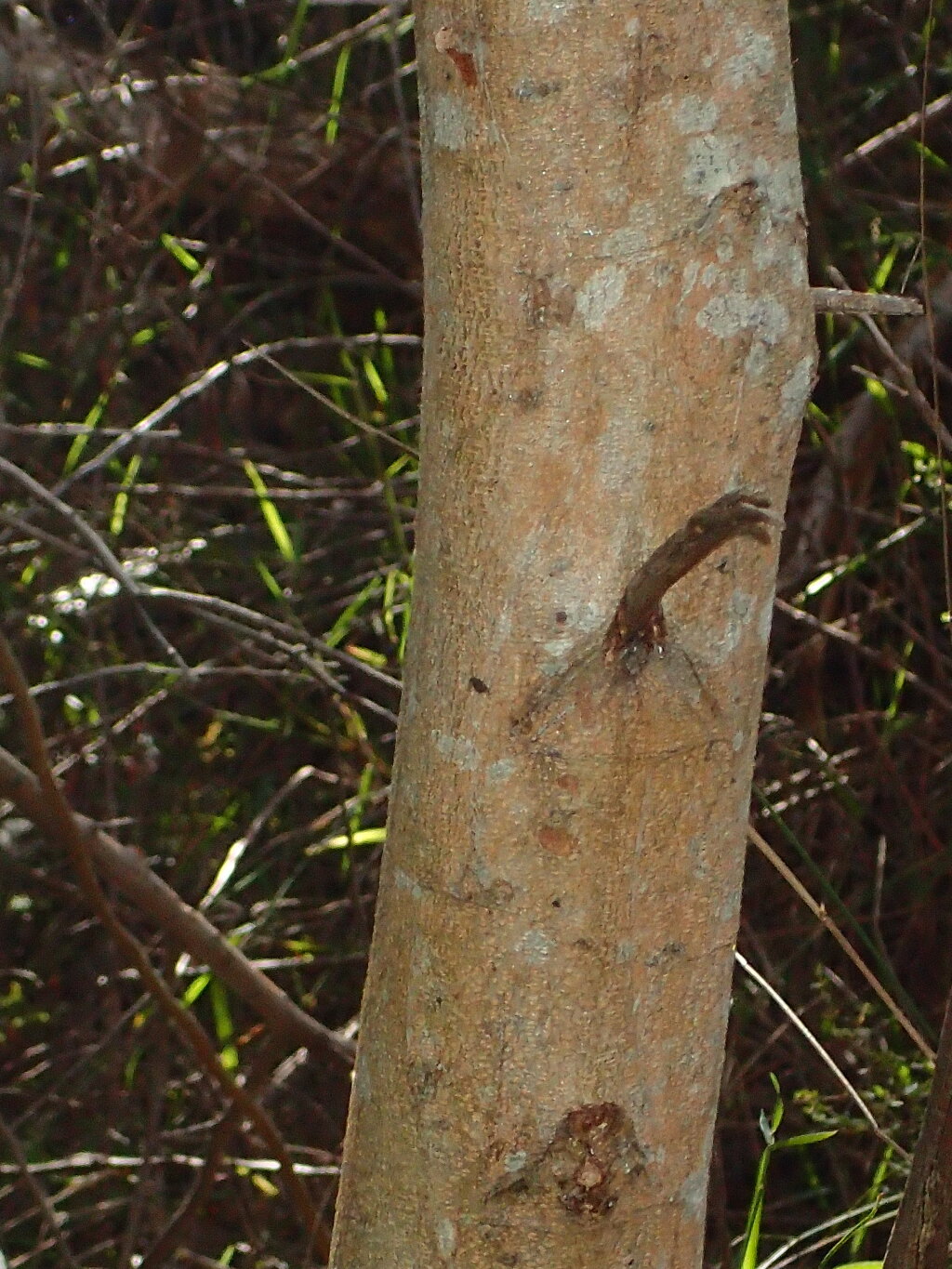Acacia leprosa var. uninervia
Maslin & D.J.MurphyBushy shrubs 2–5 m high; branchlets with sparse to moderate cover of appressed, minute hairs on ribs. Phyllodes narrowly elliptic, (4–)7–14 cm long, (6–)8–15(–18) mm wide; vein 1, lateral veins fine but obvious and often distally coalescing to form a continuous intra-marginal vein on either side of the mid-vein; gland commonly 2–8 mm above pulvinus. Peduncles 3–5(–7) mm long, moderately to densely puberulous with straight, appressed or subappressed hairs, basal bract early caducous, 1.5–2.5 mm long. Heads mostly 20–35-flowered; bracteoles spathulate, usually c. 1 mm long, equal to sepals, sometimes c. 2 mm long and longer than sepals, acute or short-acuminate. Flowers Aug.–Oct.
VRiv, GipP, CVU, GGr, HSF, HNF, VAlp. Also NSW. Locally common Eucalyptus forest in ranges north-east of Melbourne (Healesville, Poweltown, Buxton) and near Mt Buffalo, with scattered occurrences west towards Ballarat.
This variety is most similar to A. leprosa var. leprosa which also has only one main vein. Acacia leprosa var. univerna is distinguished from A. leprosa var. leprosa by its wider phyllodes (more than 7 mm wide). Acacia leprosa var. leprosa is only known from Queensland and New South Wales. However, some plants from Mt Buffalo and near Healesville are somewhat intermediate between these two varieties, with phyllodes 6–9(–12) mm wide, and with the gland unusually close to the pulvinus (<2 mm above the pulvinus).
Plants with distinctly longer bracteoles (c. 2 mm long) that often exceed the mature flower buds from higher altitudes around Marysville, Alexandra and Toolangi State Forest may warrant recognition as a distinct taxon. An unusual red-flowered form of this large bracteole variant collected from Wilhelmina Falls has been cultivated as ‘Scarlet Blaze’. The parent plant of this cultivar is apparently now extinct at this location.
 Spinning
Spinning

